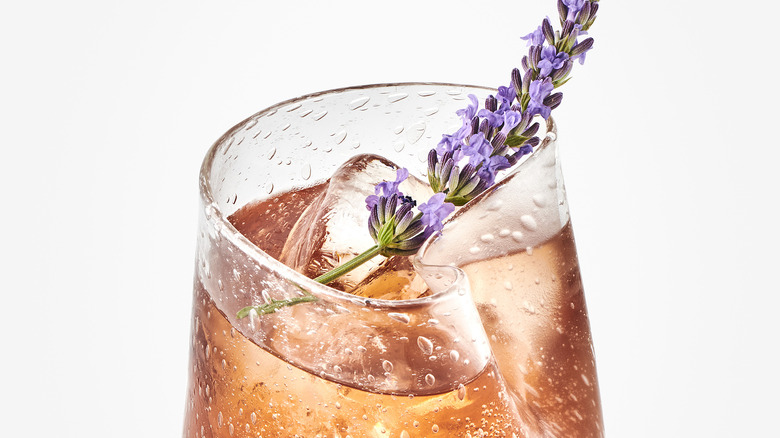What To Know About The Fragrant Art Of Cocktail Perfumes
For many bartenders, cocktail-making is an art form. Such is the case for mixologist Emanuele Balestra, who designs edible perfumes to complement drink recipes. Made from botanicals grown in Balestra's garden at Cannes' Hôtel Barrière Le Majestic, these fragrances amplify the tasting notes of both cocktails and glasses of Champagne. By appealing to a drinker's olfactory senses, such cocktail perfumes can enhance the sipping experience. Sprayed on top of drinks or as glasses are passed to customers, essences of citrus, floral, and herbal notes permeate the air.
As told to Tasting Table, Balestra's fragrance-making passion began with plants. His interest in botany and beekeeping led him to explore the ways in which cocktails could be transformed using the scents of leaves and flowers. This intersection became the inspiration for the development of his cocktail perfumes and brought him to Cannes, where Balestra found a unique ecosystem to study.
The leaves and buds that Balestra handpicks are distilled into perfumes that can be paired with drinks. "The fact of the matter is, what we smell directly affects what and how we taste," Balestra explained to VinePair. "On its own, the tongue can only detect five flavors: sweet, bitter, sour, salty, and umami. But when combined with the sense of smell, the brain is able to decipher the intended flavors of foods and drinks."
Awakening the senses with cocktail perfumes
Since high-alcoholic spirits can mask other aromas, Emanuele Balestra explained to Tasting Table that he looks to amplify ingredients used in cocktails with matching or complementary fragrances. A spicy margarita can play well with woodsy, earthy scents, while a mai tai cocktail can be dressed up with floral or citrus essences. "Bringing them together requires intuition and creativity — you need a kind of laboratory," Balestra explained to Barrière.
In other words, don't be afraid to tinker behind your home bar. Balestra has embarked on many experiments of his own, even designing glasses that appear folded, with indentations meant to capture perfumes and preserve spritzed aromas as cocktails are sipped. Until cocktail perfumes are made available for purchase, look to use different edible ingredients to impart unique aromas to the drink recipes you make. (Keep in mind that all perfumes may not be edible like Balestra's concoctions.)
Consider the tasting notes of the drinks you serve to decide which elements you'd like to enhance or tone down. Elevate gin and ginger ale with a spray of bergamot, zhuzh up light beers with bitter orange essence, line your glass rims with crushed lavender or basil, or brighten flutes of Prosecco with the zest of grapefruit or orange. Once you begin to think of not only the drink you are making but also the scents associated with your creations, your bartending capabilities will be forever changed.

